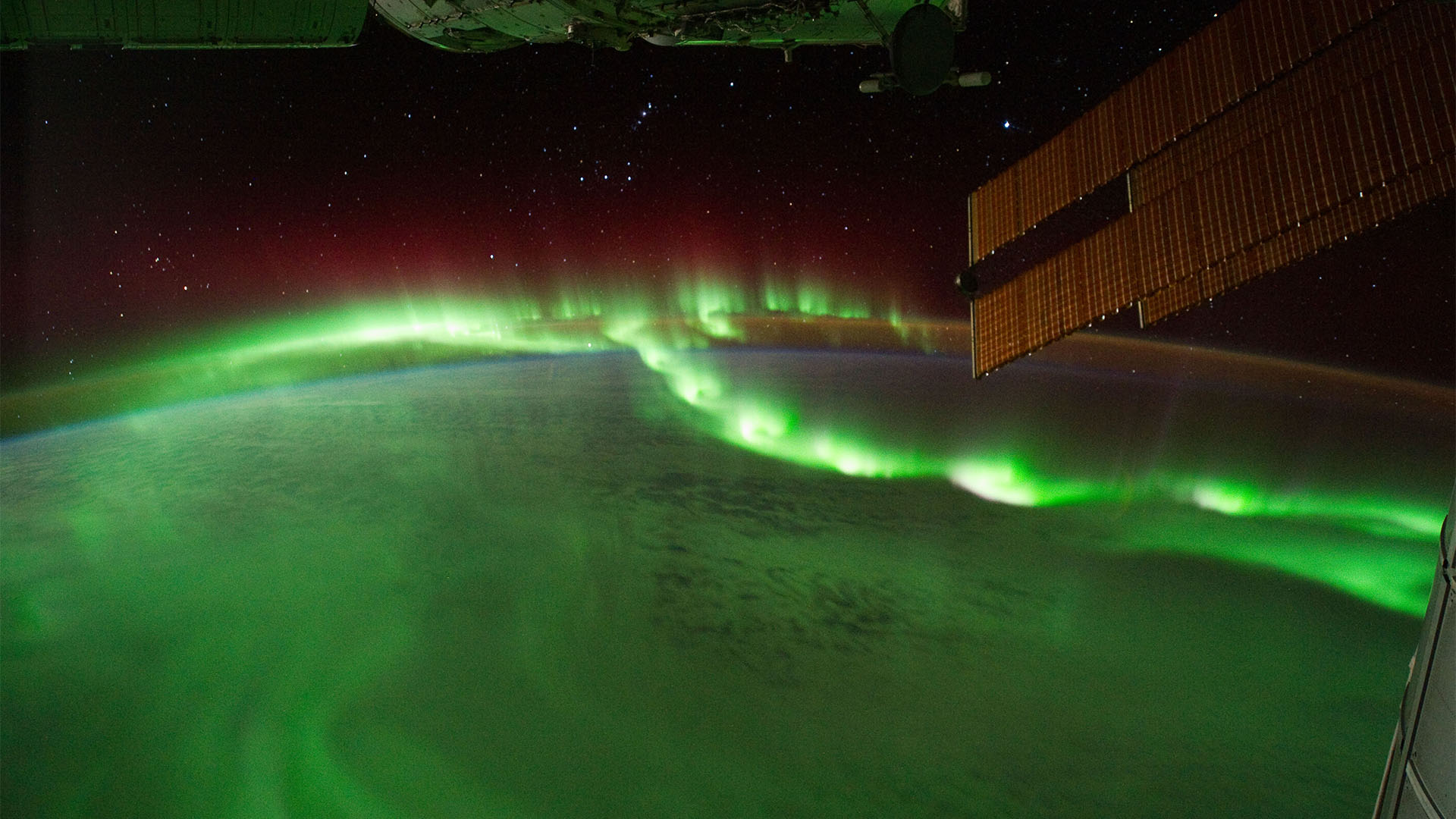LASP and Aerospace Engineering researchers will use the funds to advance their concept of a futuristic swarm of satellites to shed new light on how the solar wind affects Earth’s upper atmosphere.

A team from the University of Colorado (CU) Boulder has been awarded a prestigious research grant to study a futuristic space-technology concept.
Marcin Pilinski, a space physics researcher at the Laboratory for Atmospheric and Space Physics (LASP) at CU Boulder, has received a NASA Innovative Advanced Concepts Phase I award to develop a new method of observing velocities of atoms and molecules in Earth’s upper atmosphere. The grant, developed in partnership with Tim Minton, a professor in Ann and H.J. Smead Department of Aerospace Engineering Sciences, will enable the team to evaluate a novel technique for obtaining wind and temperature measurements that are crucial for understanding the effects of space weather from low-Earth orbit.
“Receiving this grant is truly an honor,” said Pilinski. “Our team will use the funding to develop a new way of analyzing low-energy neutral molecules and the aerospace architecture needed to field these sensors in large numbers.”
Measuring neutral winds has been one of the greatest needs—and most vexing challenges—of understanding space weather in the middle atmosphere, according to LASP Director Dan Baker. “Finding new ways to meet this challenge will be crucial for successfully predicting space weather in the future to minimize damage to space- and Earth-based assets,” says Baker. “This grant will help advance exciting new technology and keep CU Boulder at the forefront of space weather research.”
From science fiction to fact
NASA’s Innovative Advanced Concepts program fosters exploration by funding early-stage studies to evaluate technologies that could support future space and aeronautics missions. The program is funded by the agency’s Space Technology Mission Directorate, which is responsible for developing new, cross-cutting capabilities and technologies that NASA needs to achieve its current and future plans.
“NASA’s mission to explore the universe requires new technologies and new ways of doing things,” said Jim Reuter, associate administrator for NASA’s Space Technology Mission Directorate, in a recent release. “Studying these creative ideas is the first step to turn science fiction into science fact.”
As part of this effort, Pilinski’s team will receive $175,000 for a nine-month study that will focus on developing a completely new system to measure neutral winds and temperatures. This system, which includes a global constellation of low-cost spacecraft, would vastly increase the coverage of the data while reducing the cost and risk. “These significant advances will be accomplished by utilizing the sensitive dependence of a molecule’s final velocity on its initial velocity as it scatters from a surface, eliminating the need for a more traditional and complicated technique that relies on charged-particle generation and subsequent steering of ions with electric fields,” said Minton.
The results of the proposal, titled In-situ Neutral-Optics Velocity Analyzer for Thermospheric Exploration (INOVATE), could have important implications for better understanding atmospheric processes on Earth as well as other planets. “Neutral winds and temperatures are under-observed quantities critical for understanding what’s happening in the upper atmospheres of Earth, Mars, and Venus,” said Pilinski.
Ultimately, the INOVATE measurements should complement current NASA efforts, such as the Geospace Dynamics Constellation, and help answer questions about neutral wind measurements prioritized in the Decadal Strategy for Solar and Space Physics (Heliophysics). “Our findings should pave the way for technological development that will shed new light on how upper atmospheric dynamics are driven by space weather,” concluded Pilinski.
Written by Terri Cook – Head of LASP’s Office of Communication Management



